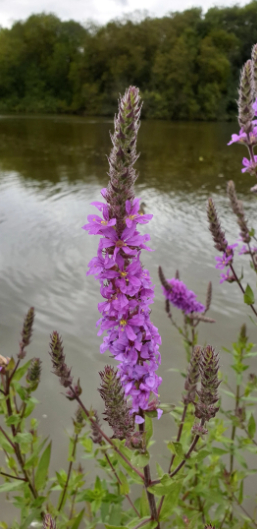A Reddit post in a botanical appreciation subreddit, where users share "plant-tastic" high-quality images of plants and fungi, warns against planting a pretty but invasive species of flower in garden beds and yards.
The poster shared an image of the purple flower on the bank of a body of water with the caption "Purple Loosestrife." Several commenters noted the flower's beauty and warned of its detrimental spread.

Purple loosestrife (Lythrum salicaria) is a non-native plant brought to North America in the 1800s. The plant spread like wildfire and continues to invade and degrade wetlands throughout the U.S.
According to the Invasive Species Centre, loosestrife can produce as many as two million seeds in one growing season.
This high fecundity creates competition for native plants, damages wetland ecosystems, and can even result in reduced nesting sites, food, and shelter for birds and an overall decline in biodiversity. Controlling its spread is crucial to protecting fish, wildlife, and plant habitats.
The Minnesota Department of Natural Resources suggests controlling purple loosestrife in late June, July, and early August while it is flowering but before going to seed.
Removing the plants by hand is recommended, with great care taken to dispose of them and avoid transporting seeds via clothing and tools to another location. Loosestrife should be disposed of far from any bodies of water and ideally dried out and burned.
Loosestrife is not the only invasive plant to heed.
Gardeners are noticing that the warming of the planet is significantly impacting their backyards. Unpredictable growing seasons, high temperatures, and compromised ecosystems allow non-native species to expand, adding more pressure for already compromised native plants.
As stewards of the environment, gardeners can significantly and positively impact biodiversity loss by converting lawns into native plant gardens.
Lawn removal saves money and maintenance time, conserves water, and, when replaced with diverse native species like buffalo grass or clover, benefits wildlife, birds, and pollinators. Xeriscaping is also a great way to reduce water usage, and even a partial lawn replacement can have an impact. Check out TCD's rewilding guide to get started.
And, if you find and identify purple loosestrife, one commenter gets straight to the point: "Kill it! Kill it now!"One commenter called the plant "the purple devil," while another labeled it a "beautiful, terrible plant."
Join our free newsletter for easy tips to save more, waste less, and help yourself while helping the planet.









